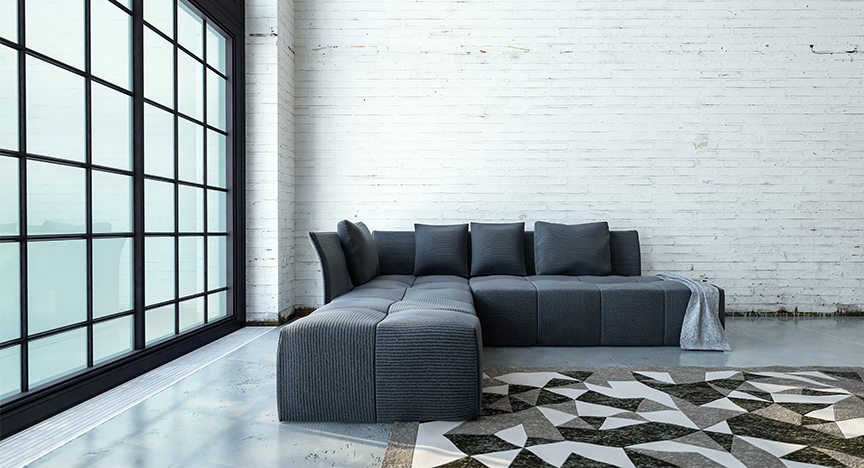In celebration of Her Majesty’s Platinum Jubilee, here’s a look back at some of the key cultural moments in Queen Elizabeth II’s reign and her 70 years of service. She may not be a trendsetter, but there certainly are some distinctive styles that the Queen has adopted in her lifetime.
Queen Elizabeth II succeeded her father King George VI at the age of 25. As such a natural fit for the role, it’s easy to forget that she wasn’t supposed to become Queen at all. It is only because of her Uncle King Edward VIII’s abdication, that she was fast-tracked into the next successor.
A royal feast for the eyes
The Queen’s coronation was broadcast on television by the BBC on 2nd June 1953. 27 million people tuned in to see the grand event, which was a feast for the eyes, with so much opulence from head to toe and the abbey to the carriage. A sharp contrast to the homes of Great Britain at the time, where the interior design trend was influenced by the Scandinavian movement, which focused more on clean lines and minimalist living.
Traditions over trends
Interior design styles for Queen Elizabeth II’s Windsor Castle and Buckingham Palace (among many others) do not conform to the decades of different trends that everyday homes followed in the UK. While her personal fashion was kept more current with prints and popular styles, the living spaces kept up their traditional and regal feel. Gold accents and gilded ceilings, grand furniture collected from all over the world, extravagant chandeliers, oversized mirrors, intricate wallpapers, decorative rugs and luxurious fabrics are what we all picture when we think of a royal household. Why would a royal household follow any other trend when Royal is its own interior design style altogether? This traditional, dramatic and opulent style of decorating has been used for hundreds of years by royal families to help distinguish their elite status and affluent lifestyle from the rest of the population.
Rich colour has always been an important design statement for a royal room, with ‘royal blue’ taking the top spot. This used to be the most expensive pigment and so was used in large quantities to show royalty and exclusiveness. Other popular rich colours are named after precious stones like ruby red and emerald green, and they often dominate regal spaces to create drama and extravagance. Intricate patterns on wallpapers and luxurious fabrics such as velvets and silks soften the rooms, while still soaking them in glamour and excessiveness. However, even the royals seek rooms for calmness, and so pastel colours like creams, pale pinks and egg blues are often used in more casual spaces for a sense of relaxation.
It's common to envisage a royal space more like a museum, full of wonderful artefacts and art pieces. That’s because these stately rooms are used to showcase the family's heritage, their elaborate gifts and the unique craftsmanship that only a few can afford. These spaces also celebrate other cultures from around the world that have been travelled to and visited from, for hundreds of years. The Queen’s home of residence, Buckingham Palace is no museum however and very much a working palace that’s in constant use by all the Royal Family.
Dressing for the occasion
Right from the start of her reign, Her Majesty has always had an exciting wardrobe and a bold fashion style. Never afraid of a bright colour or floral print, the Queen made formal clothing fun and always a step away from the traditional trends associated with royal figures. Her fashion style over the years often reflected the state of the nation, for example in 1947, she married Philip Mountbatten, a huge spectacle for the media and public worldwide. The wedding dress was in the spotlight; however, Britain was rationing post-war and so the Queen had to purchase material using coupons - not what you’d expect from royalty! The dress was still a glamorous showstopper with a long lace train and 10,000 seed pearls and crystals from America.
While the Queen’s clothing isn’t always considered ‘on trend’ it is designed to make a statement. She does not dress to blend in with the crowd, she needs to stand out and be easily spotted, so often fuchsias, bright coral, primrose yellows and vibrant greens are the chosen colour palettes. When she’s in more casual wear, you’ll often see her in more muted tones and comfortable clothes like wool skirts, headscarves, and knee-high socks. Her fashion has still influenced others over time, from her use of block colouring to power dressing and even her headscarves influenced a Gucci runway collection in 2016.
A culture icon
According to Professor Sir David Cannadine, chairman of the National Portrait Gallery, the Queen is "the most portrayed woman in history". Her face is so iconic that even our stamps don’t need a country of origin printed on them. From banknotes to coins, we see our Queen’s face everywhere and she is embedded in British culture, as well as many home decors.
In the mid 80’s famous artist Andy Warhol created a Reigning Queen series showcasing Queen Elizabeth’s face in bright contrasting colours. As Britain’s biggest icon, the Queen’s face has often been used for an act of rebellion like by Jamie Reid who created the famous “God Save the Queen” cover for the Sex Pistols in 1977. It’s also been a source for comedy, with the likes of Spitting Image in the eighties and nineties who used puppets to mock the Royal Family. And let’s not forget her famous cameo in the opening ceremony of the London Olympics 2012, with Daniel Craig to celebrate the Royal family and James Bond.
Our Queen has also kept up with many tech trends, she was one of the first to send an email in 1976 with her username HME2 (Her Majesty, Elizabeth II). In 2014, she tapped out her first Tweet on a tablet saying "It is a pleasure to open the Information Age exhibition today at the @ScienceMuseum and I hope people will enjoy visiting. Elizabeth R." She has also used a mobile phone since 2001, owns an iPod and is on Instagram. Not a technophobe and quite the hip Granny!
Celebrate in style
The Queen isn’t one to follow or set a trend, and for good reason. She has a completely different lifestyle, homelife and duty as a British monarch. Of course, some people have been influenced by her fashion style and the traditional, opulent style of her regal homes will probably still be sought after for many centuries to come. That’s because Royal is an interior design style, not a trend. It is not influenced by current culture and is something to be celebrated by everyone who loves British history and Royal tradition.






